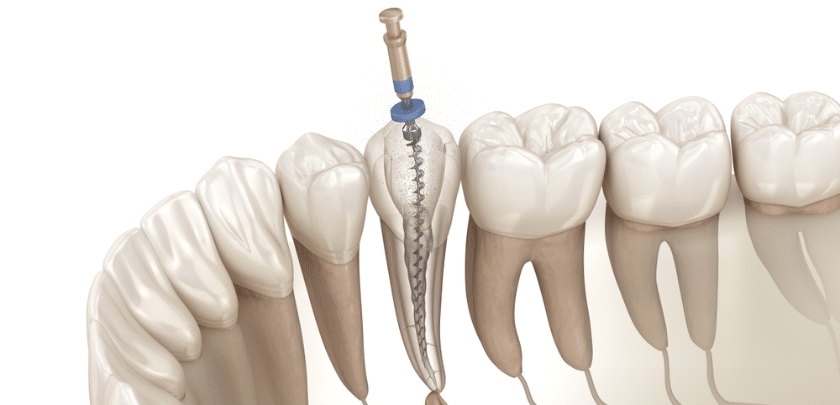Do I Need a Root Canal? 6 Signs, Plus 4 Alternatives
A persistent toothache can send shivers down anyone’s spine. But when the throbbing pain intensifies, radiating sensitivity sets in, and over-the-counter pain relievers seem powerless, the dreaded question arises: Do I need a root canal?
While root canals have garnered a bit of a negative reputation, they’re a valuable dental procedure designed to save a tooth. However, understanding the signs and exploring alternative treatments can empower you to make informed decisions about your oral health.
The Battlefield Within: Understanding the Tooth’s Anatomy
To grasp the need for a root canal, let’s delve into the anatomy of a tooth. Each tooth has a hard outer crown, visible above the gum line, and a hidden inner chamber called the pulp. This pulp contains nerves, blood vessels, and connective tissues, keeping the tooth alive and nourished.
The Root of the Problem: When the Pulp Gets Infected
Bacteria from plaque buildup, deep decay, cracks, or gum disease can invade the pulp, causing an infection. This inflamed and infected pulp is the culprit behind the excruciating pain associated with a root canal situation.
6 Signs That Might Point You Towards a Root Canal
Here are some telltale signs that could indicate the need for a root canal:
- Persistent and Throbbing Toothache: A dull or sharp ache that intensifies with hot or cold stimuli and lingers for days is a red flag.
- Sensitivity to Pressure: Does chewing or biting down cause excruciating pain? This could signify inflammation in the pulp.
- Swollen Gums: Inflammation around the infected tooth can cause the gum tissue to become puffy and tender.
- Visible Pimple on the Gums: In some cases, an abscess (a pus-filled pocket) might develop near the infected tooth, presenting as a bump on the gums.
- Lingering Bad Breath: A persistent foul odor can be a sign of infection within the tooth.
- Discoloration of the Tooth: An abscessed tooth might appear discolored or darker than surrounding teeth.
But Wait, There Might Be Alternatives!
Before jumping to conclusions, it’s crucial to consult your dentist. They can conduct a thorough examination, including X-rays, to diagnose the cause of your pain and determine the most suitable treatment. Here are some potential alternatives to a root canal:
- Fillings: For smaller cavities that haven’t reached the pulp, a filling can remove decay and restore the tooth structure.
- Crowns: For extensively damaged teeth with compromised structures, your dentist places a crown over the remaining tooth structure to restore strength and functionality.
- Antibiotics: In some cases, your dentist may prescribe antibiotics alongside other procedures to combat infection before attempting to save the tooth.
- Close Monitoring: If the tooth isn’t causing severe pain and the infection seems mild, your dentist might recommend close monitoring and good oral hygiene practices to see if the symptoms subside.
The Root Canal Procedure: What to Expect
If a root canal is necessary, there’s no need to worry! Modern dentistry and anesthesia make the procedure comfortable. Here’s a simplified overview:
- Local Anesthesia: Your dentist numbs the area around the tooth to minimize discomfort.
- Accessing the Pulp: The dentist creates a small opening in the tooth crown to access the infected pulp.
- Pulp Removal: They carefully remove the infected pulp, including nerves and blood vessels.
- Cleaning and Disinfecting: The dentist thoroughly cleans and disinfects the canals within the tooth root to eliminate any remaining bacteria.
- Filling and Sealing: They fill the canals with a special material and seal the tooth to prevent further infection.
- Crown (Optional): In some cases, the dentist may recommend a crown to restore the tooth’s strength and appearance.
Recovery After a Root Canal
Following a root canal, some mild discomfort and sensitivity are normal. Your dentist will prescribe medication and provide instructions for proper care to ensure a smooth recovery.
Saving Your Smile: The Importance of Early Detection
Time is of the essence when it comes to treating tooth infections. Early diagnosis and treatment can often save a tooth with a filling or crown. However, neglecting the issue can lead to complications like jawbone infection and even tooth loss.
A throbbing toothache shouldn’t be ignored. Schedule a dental appointment promptly for proper diagnosis. While root canals might seem daunting, they’re a valuable tool for preserving your natural teeth. Remember, with good oral hygiene practices and regular dental checkups, you can significantly reduce the risk of needing a root canal in the first place.


